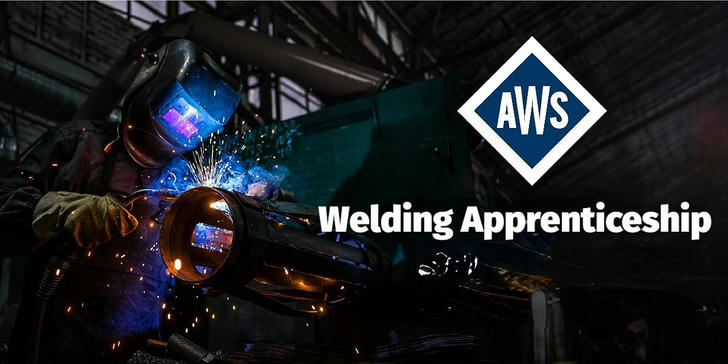Building the Future Welding Workforce
The United States is currently facing a critical shortage of skilled welding professionals. According to the American Welding Society (AWS) workforce data, more than 82,000 welding jobs will need to be filled annually through 2028. To this end, the American Welding Society (AWS) has developed comprehensive registered welding apprenticeship programs designed to attract, train, and retain the next generation of welders. These programs, supported in partnership with the U.S. Department of Labor and the AWS Foundation, are designed to provide individuals with theoretical knowledge and practical experience while helping employers meet industry needs.

🏭 AWS Certified Welder Program
The Certified Welder Program is the backbone of AWS apprenticeships. Structured as a time-based curriculum, it generally spans 3 to 4 years, covering both on-the-job learning and classroom instruction . The curriculum utilizes the AWS National Guideline Standard to ensure apprentices learn:
Practical welding skills, using arc and gas welding processes to fabricate or repair components
Blueprint reading, welding symbols, layout interpretation
Safety training, including ANSI Z49.1 protocols
Paid On-the-Job Learning (OJL)
Apprentices are employees who receive a wage commensurate with their skills while working and learning. Minimum hours may be required,Apprentices work as paid employees from day one.
AWS & Department of Labor Standards
Each program aligns with AWS’s and DOL's National Guideline Standards, ensuring high-quality, industry-recognized training frameworks tailored to workforce needs
Classroom Learning
Apprentices take welding-related courses at a partner institution (technical school, community college, etc.). Courses may have minimum hours required.
Workflow Sheet
Your plan includes an outline of the tasks or skills the apprentice will learn and an estimate of how long each task will take.
Mentorship
Apprentices will work under an experienced tradesperson at your company and receive structured mentoring.
Certifications
Upon completion of the program, apprentices will receive industry-recognized credentials, which may include AWS Certified Welder and Journeyworkers credentials. Organizations may also choose to incorporate other credentials into their programs, such as OSHA, MSHA, etc.
🎯 Benefits for Employers and Apprentices
Employers enjoy:
Reduced labor costs, partly offset by federal funding, the GI Bill®, and state tax incentives .
A pipeline to custom-trained talent, tailored to specific operational needs
Higher productivity and retention, thanks to integrated learning on the job
Enhanced community partnerships with schools and workforce boards **
Apprentices gain:
Paid employment with structured skill growth
A diverse skill set: welding techniques, blueprint reading, welding codes, safety, communication, and quality assurance
Industry-recognized credentials (AWS, OSHA, MSHA, CWI, CRAW, etc.) upon graduation
🌐 Industry Impact
Registered apprenticeships have historically delivered win-win training models, and AWS amplifies this model for welding industries—ranging from fabrication, aerospace, maritime, manufacturing, construction, oil & gas, to structural and piping work . These programs are scalable, supporting employers of all sizes—from small businesses to large enterprises—with opportunities to collaborate with educational partners and community boards.
🚀 How to Start Your AWS Apprenticeship Program
Contact the AWS Foundation to begin developing and setting up your program.
Choose a program: Certified Welder, Welding Inspector, or Automation Specialist.
Determine your curriculum: On-the-Job Training (OJL) hours, classroom hours, mentorship programs, and salary growth plans.
🧭 Conclusion
AWS Registered Apprenticeship Programs stand as a cornerstone solution for closing the skilled welder gap in the U.S. With structured, paid training supported by theory and mentorship—and accented with industry-recognized credentials—these programs benefit apprentices, employers, and the broader welding community.
